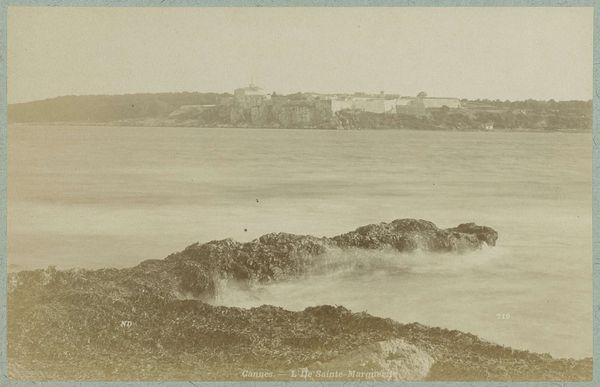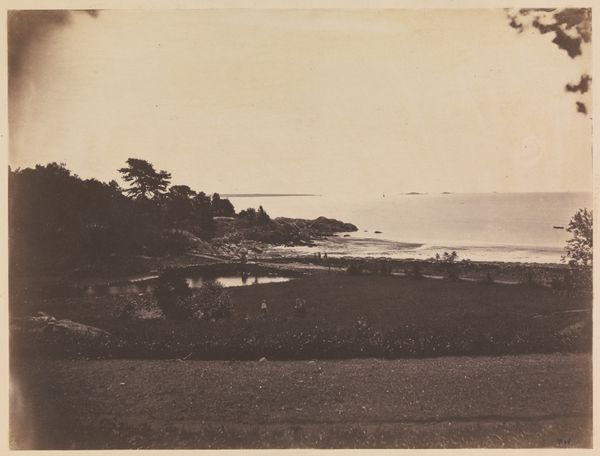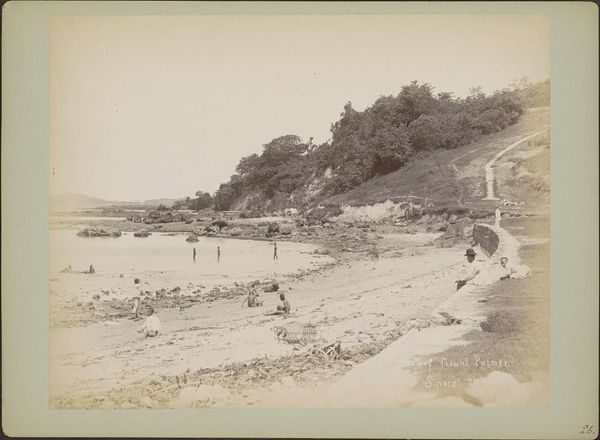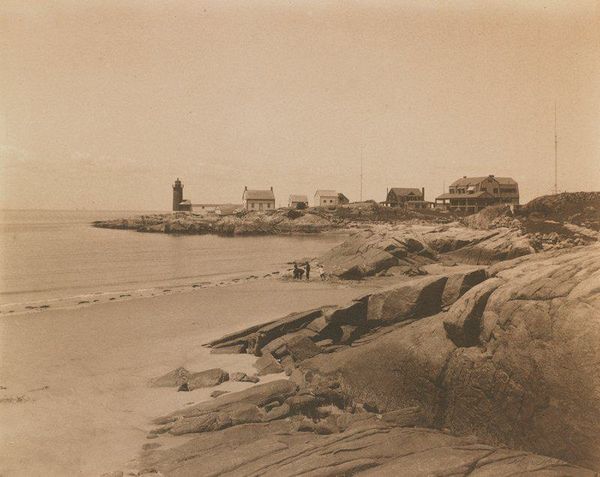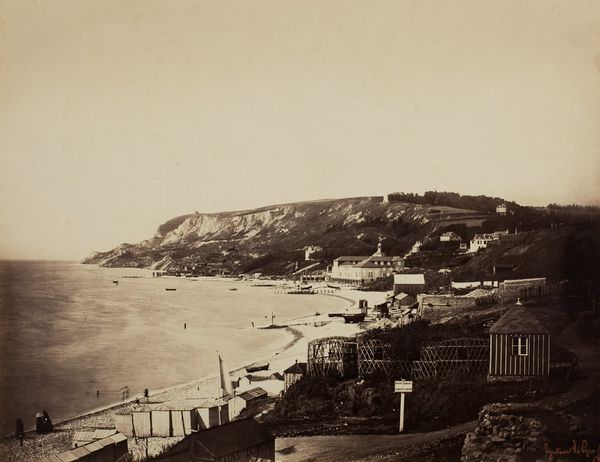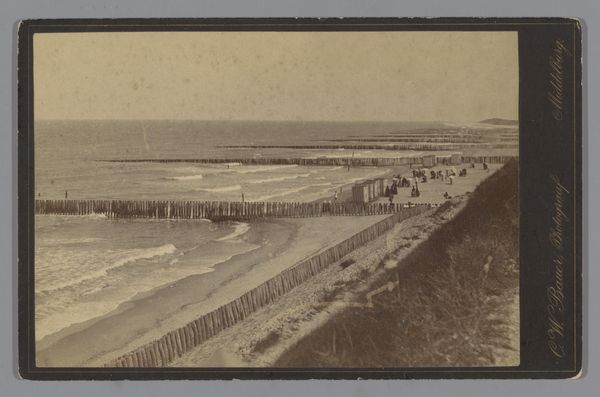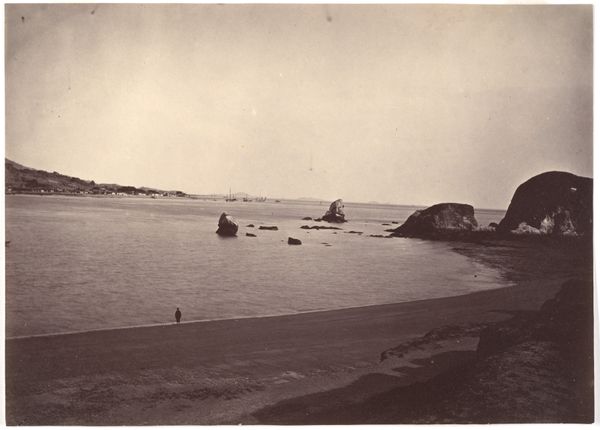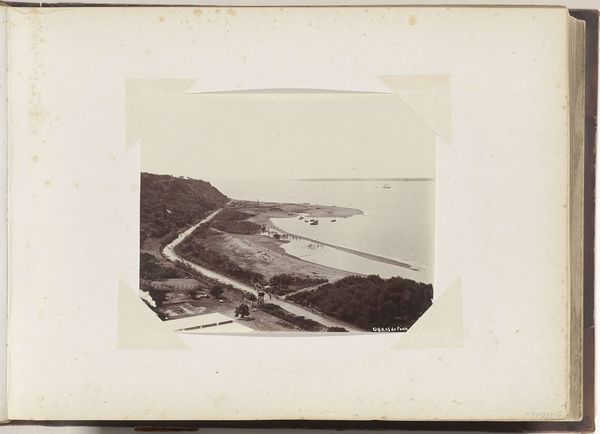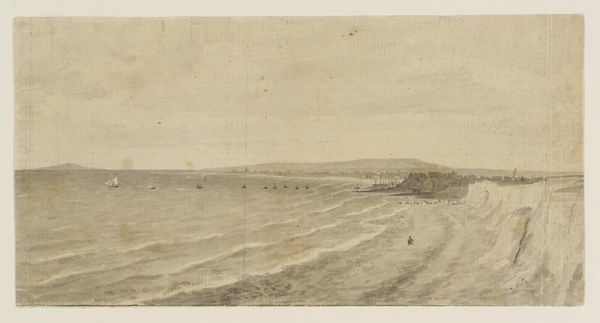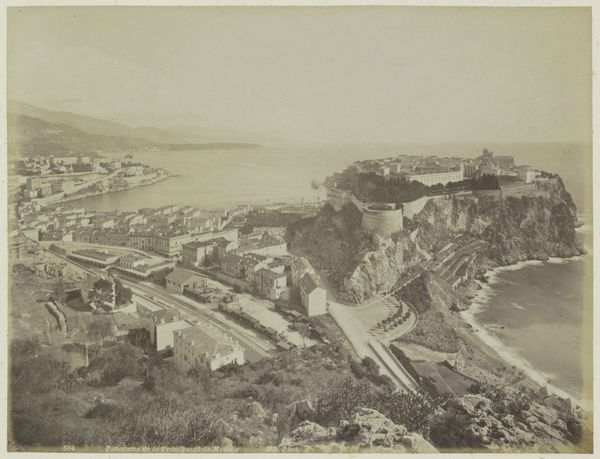
Dimensions: height 133 mm, width 199 mm
Copyright: Rijks Museum: Open Domain
Editor: Looking at James Valentine's albumen print, "Strand en pier bij Bournemouth, Engeland," made sometime between 1851 and 1880, now at the Rijksmuseum, I’m struck by how much activity is packed into one scene. The figures on the beach feel like they’re almost performing for the camera. What catches your eye in this photograph? Curator: I see a meticulously constructed image designed for a rapidly changing society. Consider the historical context: seaside resorts like Bournemouth were exploding in popularity with the rise of the middle class and increased leisure time facilitated by industrialization. Valentine’s photograph isn’t just capturing a landscape, it's capturing and, to some extent, *selling* a lifestyle. Editor: Selling a lifestyle? How so? Curator: The composition is deliberate. The elevated viewpoint, the carefully placed figures, the framing of the pier – all contribute to an image of ordered leisure and bourgeois respectability. It's about projecting an aspirational vision of English society to both domestic and international audiences, particularly with the rise of tourism. How do you think the development of photography impacts that? Editor: It's like, finally, proof that this idealized vacation experience is real, so even more people want it! Seeing the photograph probably amplified the desire and the possibility. I guess it's an early form of social media advertising, then? Curator: Precisely! And understanding that social and economic context allows us to read this image not just as a pretty picture, but as a piece of cultural propaganda, shaping perceptions and desires during a pivotal era of social change. Editor: So, looking at a photo, which seems like a straightforward representation of a place, we're actually seeing a reflection of Victorian values and the power of image-making itself. That gives me a whole new perspective! Curator: Absolutely, and that's why art history can provide us valuable insight into past sociopolitical influences.
Comments
No comments
Be the first to comment and join the conversation on the ultimate creative platform.


